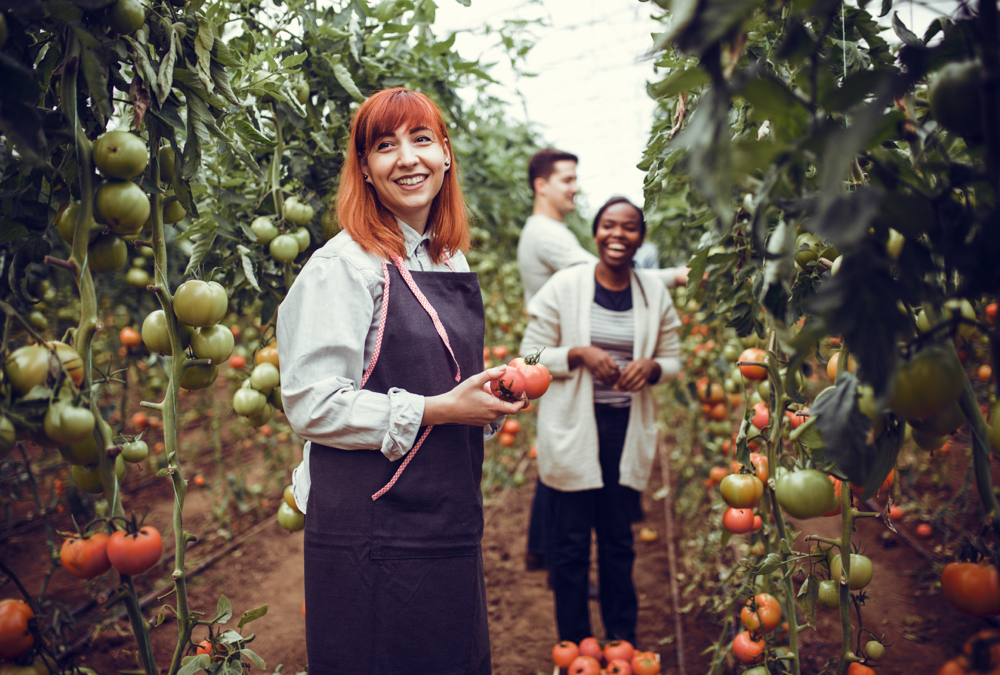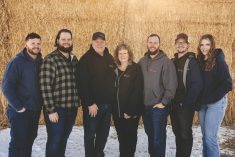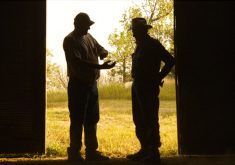The truth is, it has probably happened to all of us. We meet someone for the first time and we walk away saying, “Wow, they’re a lot different that I thought they’d be.”
Maybe we don’t think there’s a reason, but if we probed just a little, we’d often find it’s a sign our unconscious biases are at fault.
We all have them. In fact, says Darren C. Brown, a strategic facilitator who is one of the “inspirators” of People Development, a Nova Scotia-based network of global learning and change facilitators, to be human is to have unconscious biases, and there’s an explanation why. To help us cope with what would be an overwhelming amount of information and stimuli, our brains formulate sets of beliefs and stereotypes.
Read Also

Ground rules for farm family communications
Establishing meeting ground rules can help your family find ways to communicate that work for your farm. Here are some…
They’re like maps and we use them to navigate life. But it’s easy for these maps to be based on nothing better than what we’ve been taught and the messages we’ve been exposed to in the media.
Those maps then influence how we interact with cultural diversity.
Remember, though, they apply in reverse too. When asked to picture a farmer, Brown says many people will think of an old man in bib overalls with chickens, goats and a cow — blame it on Old MacDonald’s Farm childhood imagery. It’s an outdated stereotype that doesn’t reflect modern agriculture, and that’s bad enough, but it’s actually even worse because women, young people and people of colour are locked out.
Unfortunately, these learned mental shortcuts can have a negative impact on how we perceive and respond to people at work, on boards and in our communities.
Biases aren’t always negative but when they are, they can lead to unfair discrimination against people based on gender, race, age, ethnicity, religion, physical ability or sexual orientation. Biases can show up in job descriptions, who gets hired, HR policies, and employee expectations, evaluations, discipline and terminations.
Activated in a fraction of a second, these cognitive biases can even be against our own group and can go against our stated beliefs.
Such stereotypes, prejudices and generalizations get in the way of truly understanding and relating to one another and can lead to inequities. We may, for instance, hold the bar higher for someone who doesn’t fit our stereotyped version, says Brown. “The individual is prejudged… unconsciously we are forcing them to prove themselves.”
Doing diversity right

When an older person discounts a younger person because they think all young people are lazy, or when a younger person prejudges all older people as being out of touch, those are examples of a micro-inequity, says Michael Bach, author of Birds of All Feathers: Doing Diversity and Inclusion Right.
It’s an essential topic in today’s agriculture. Working towards diversity and inclusion is good business, continues Bach, who heads up the Canadian Centre for Diversity and Inclusion, an organization that focuses on practical solutions that help employers move toward true inclusion. If you limit your hiring to white, straight, able-bodied men who make up only about one-third of the working age population, you are hiring only from this small labour pool and you’ll never know if you’re actually hiring the best or the brightest, he says.
Jennifer Wright, senior HR advisor at the Canadian Agricultural Human Resource Council (CAHRC), agrees. Research shows that having a diverse workforce results in increased productivity and innovation, she says.
Looked at the other way, Bach adds, businesses that don’t work at fostering diversity and inclusivity also risk having a tarnished reputation with consumers and the public.
The good news is that we can become aware of our unconscious biases and take steps to overcome them. We need to know, though, that it won’t happen without effort.
“Our brains work against inclusion,” says Bach. “Our brains like to be exposed to information that agrees with our existing perspective. We have to be open-minded and willing to learn new information which takes energy and can also push us outside our comfort zone.”
This can be hard at first but gets easier eventually.
Becoming aware of our biases is an ongoing process, agrees Brown. “Our biases are deeply programmed in our psyches and the way we see the world.” We have to continue to check ourselves but it is also very liberating when we become aware, he says.
While bias awareness training is a start, it doesn’t go far enough, says Wright. You need to take a measurement of where you’re at, set goals and create a plan for the steps you will follow to get there, she says. Wright offers some practical tips:
- To ensure you are hiring, without any biases, the best person, cover the person’s name on the application and look at the skill set they have.
- Write gender-neutral job descriptions. Avoid saying, “he will do this” and “he will do that.”
- Create a more diverse company image on your website and other promotional materials.
- Look at your policies especially as relating to pay equity, and giving employees flexibility for family and cultural needs.
At first, it will be necessary to be very intentional about being inclusive but in time it will get easier and become routine practice, says Wright.

While leadership from the top is important to make inclusivity a priority, the middle layers must also understand the importance and “buy in,” says Bach, who adds that by creating an inclusive environment, you will lower your recruitment and training costs. “People of colour won’t stick around in a racist environment and women won’t stick around in a sexist environment.”
Wright agrees. “For example, I have heard some frustrated farmers complain, ‘We hired a few women, they were here but then they left.’ You have to provide a welcoming work environment to support them too.” Gone are the days of “Here’s the job; take it or leave it.” That doesn’t work in an economy with a labour shortage.
These damaging unconscious biases are also hurting many rural communities, says Alberta community enthusiast Doug Griffiths, author of 13 Ways to Kill Your Community. “We tend to hang around with those who are the same colour, race and religion as us and we subconsciously judge those who are different.”
We may think our communities are friendly but unless we make a deliberate effort to be open-minded and to overcome our subconscious racism and biases, our communities will not be welcoming to newcomers, Griffiths warns. And young people, who tend to be more worldly than previous generations due to the internet and increased travel, are also attracted to communities with diverse cultures, he adds.
The message is clear for all of us, Griffiths and other diversity experts say. It’s time to get to work on creating diverse and dynamic workplaces and welcoming communities. They show we’re serious about the future.
Unconscious bias checklist
Biases can be subtle and many of the little things people say and do can have a significant impact on creating an inclusive board or workplace. Do you recognize any of these behaviours?
- Not paying attention or rolling your eyes when certain people share ideas or contribute to the conversation.
- Greeting certain colleagues at work but ignoring or avoiding others.
- Getting irritated when certain people speak or share ideas with the group.
- Listening to others with closed arms across the chest.
- Looking at your watch, smartphone or computer while someone is talking to you.
- Praising an idea from one colleague while ignoring the same idea presented by another.
- Using words or making jokes that may be perceived by others as hurtful or degrading.
(Adapted from Canadian Agricultural Human Resource Council [CAHRC] Agri HR Toolkit)
Positive steps to a diverse, equitable and inclusive environment
- Educate yourself about discrimination by reading about it.
- Reflect on your own attitudes and behaviours that may contribute towards discrimination at work and in social situations.
- Donate time or money to a cause that promotes diversity or supports a culture different from your own.
- Be open to hearing input from anyone in the workplace, even if their experiences or opinions are different than your own.
- If language barriers, transportation issues, religious holidays and other issues prevent workers from participating in events, meetings or training programs, try to find solutions.
- Ensure all HR practices and policies support diversity, inclusion and equity including recruitment, selection, promotion, training and development, compensation, and succession planning.
- Host a diversity workshop or discussion.
(Adapted from Canadian Agricultural Human Resource Council [CAHRC] Agri HR Toolkit)
Resources
- Birds of All Feathers: Doing Diversity and Inclusion Right (2020) by Michael Bach
- Are you biased? I am: TEDx Talk with Kristen Pressner
- Sway: Unravelling Unconscious Bias (2020) by Pragya Agarwal
- CAHRC Agri HR Toolkit includes an Unconscious Bias Awareness Checklist
















